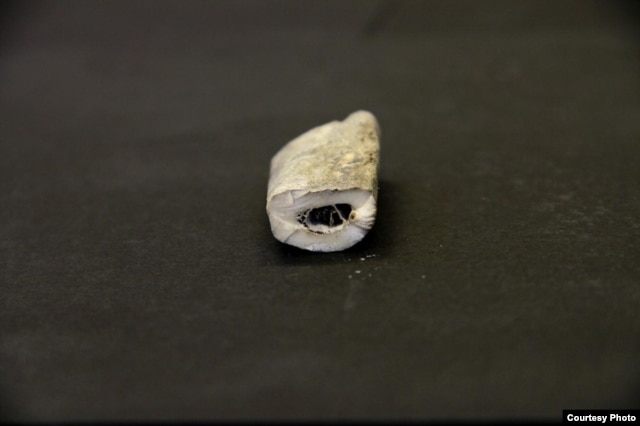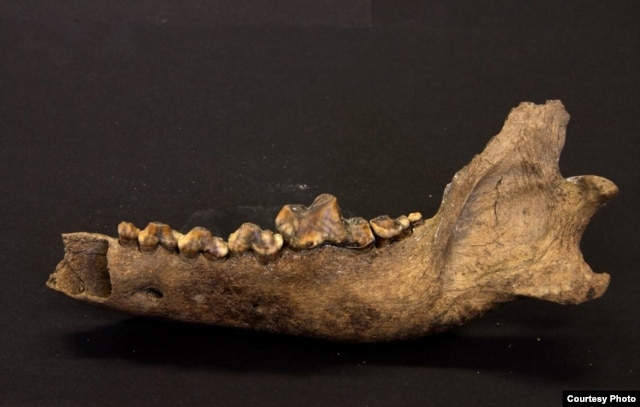Rosanne Skirble
Last updated on: March 23, 2016
There are about 1 billion dogs in the world, hundreds of breeds,
uncountable mixes. But all these animals share a common ancestor, the
wolf. Scientists continue to debate when and where dogs and wolves diverged.
Some studies date that split to between 10,000 and 15,000 years ago. But zoologist Love Dalen at the Swedish Natural History Museum said it could be twice that long ago. He based that estimate on a Taimyr wolf bone fragment he discovered on an expedition to Siberia. Carbon dating and genetic analysis place that ancient wolf back in the last Ice Age.
Greger Larson, a biologist at the University of Oxford, challenged that conclusion. "[That date] could be interpreted as domestication, except for the strong possibility, I would argue, that modern dogs didn't descend from that lineage of wolves,” he said. “So the most recent common ancestor isn't dating domestication. It's just saying when it was that modern dogs and that particular wolf shared a common ancestor, and that could have predated domestication by any number of years."
Timing question
But did domestication and the evolutionary split happen at the same time? Larson is working with colleagues at universities and museums worldwide to compile ancient bone and DNA samples for a huge database that could provide a definitive answer. “We are focused on getting both genetic data and morphological data on more than 1,000 ancient dogs and wolves going back 30,000 years or so across the old world and new world in an effort to try to actually watch that process happen in wolves becoming dogs, and that spread of different genetic and morphometric signatures across time and space,” Larson said.
Dogs were the first domesticated animal. Larson said he thought domestication occurred several thousand years before human society shifted from hunter-gatherer to settled agriculture, about 10,000 years ago in many parts of the world.
Larson said he expected to release a major study in the near future, and others with his collaborators over the next several years, using the common data. The project has gained broad support from the Natural Environment Research Council in England and the European Research Council with some $2.5 million in funding.
source
Some studies date that split to between 10,000 and 15,000 years ago. But zoologist Love Dalen at the Swedish Natural History Museum said it could be twice that long ago. He based that estimate on a Taimyr wolf bone fragment he discovered on an expedition to Siberia. Carbon dating and genetic analysis place that ancient wolf back in the last Ice Age.
DNA
from this small piece of a rib bone from an ancient Taimyr wolf suggest
that dogs may have been domesticated 30,000 years ago. (Credit: Love
Dalén)
“This wolf belonged to the population that was the last known common
ancestor between wolves and dogs," he said. "And therefore we have to
revise the split between wolves and dogs to at least 30,000 years ago.”Greger Larson, a biologist at the University of Oxford, challenged that conclusion. "[That date] could be interpreted as domestication, except for the strong possibility, I would argue, that modern dogs didn't descend from that lineage of wolves,” he said. “So the most recent common ancestor isn't dating domestication. It's just saying when it was that modern dogs and that particular wolf shared a common ancestor, and that could have predated domestication by any number of years."
Timing question
But did domestication and the evolutionary split happen at the same time? Larson is working with colleagues at universities and museums worldwide to compile ancient bone and DNA samples for a huge database that could provide a definitive answer. “We are focused on getting both genetic data and morphological data on more than 1,000 ancient dogs and wolves going back 30,000 years or so across the old world and new world in an effort to try to actually watch that process happen in wolves becoming dogs, and that spread of different genetic and morphometric signatures across time and space,” Larson said.
Dogs were the first domesticated animal. Larson said he thought domestication occurred several thousand years before human society shifted from hunter-gatherer to settled agriculture, about 10,000 years ago in many parts of the world.
This
is bone from an ancient Taimyr wolf, which lived approximately 27,000
to 40,000 years ago, according to DNA and carbon dating analysis.
(Credit: Love Dalén)
Larson said those events changed the course of civilization. “What it does is that it kicks off this very new way that humans have
of relating to the natural world,” he said. “There’s an argument that
says that if you don’t have dogs, then there’s a chance that the whole
idea of domestication doesn’t form for quite a while after that, and it
delays anything else that happens after that, or it makes it not even
possible.”Larson said he expected to release a major study in the near future, and others with his collaborators over the next several years, using the common data. The project has gained broad support from the Natural Environment Research Council in England and the European Research Council with some $2.5 million in funding.
source




No comments:
Post a Comment